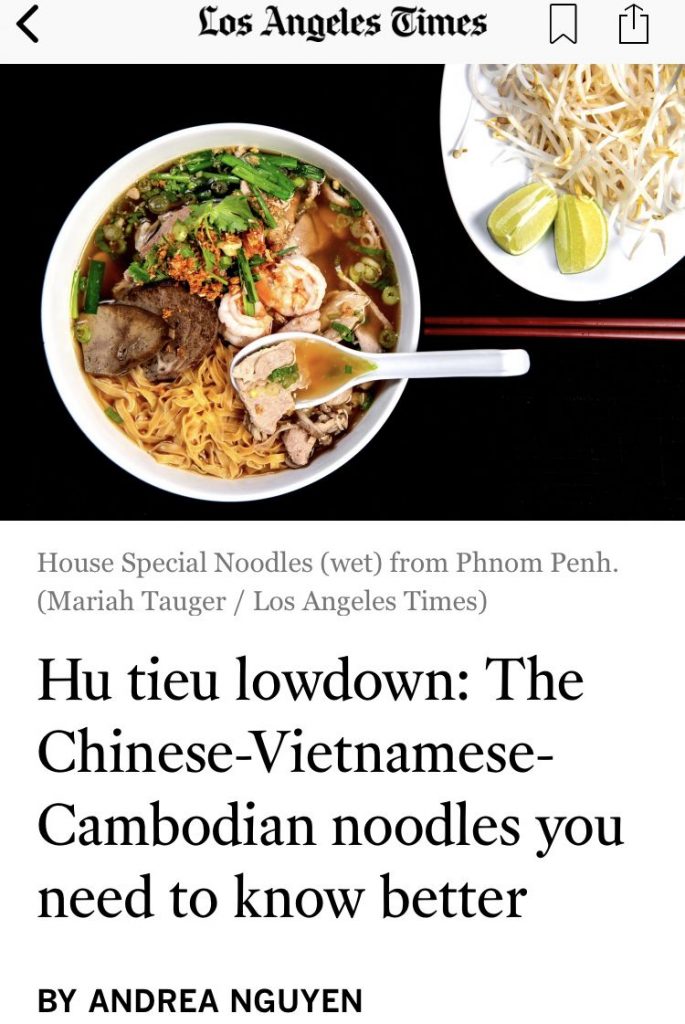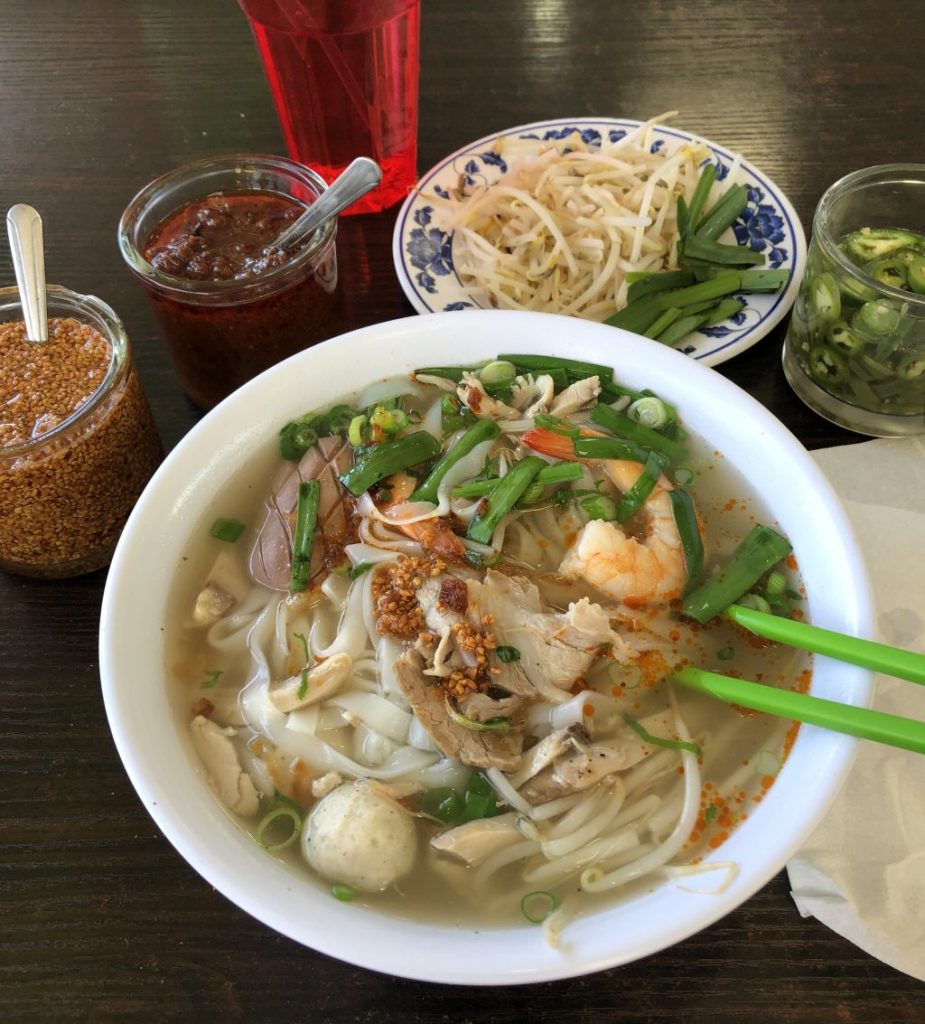
Who knew about hu tieu noodle soup? I knew some things about the southern Viet favorite, but not enough. To slay my ignorance, I went to a bunch of hu tieu spots in Southern California to report on a story for the Los Angeles Times. I also interviewed experts for the article that was published today in the paper. Note that at the end of the story, there are helpful sidebars on how to find hu tieu restaurants and how to order!
As part of my research, I snapped a bunch of photos so I'm posting them here as a bonus. Hopefully, you'll be able to further navigate the noodle soup menu options!
Offal or Not?
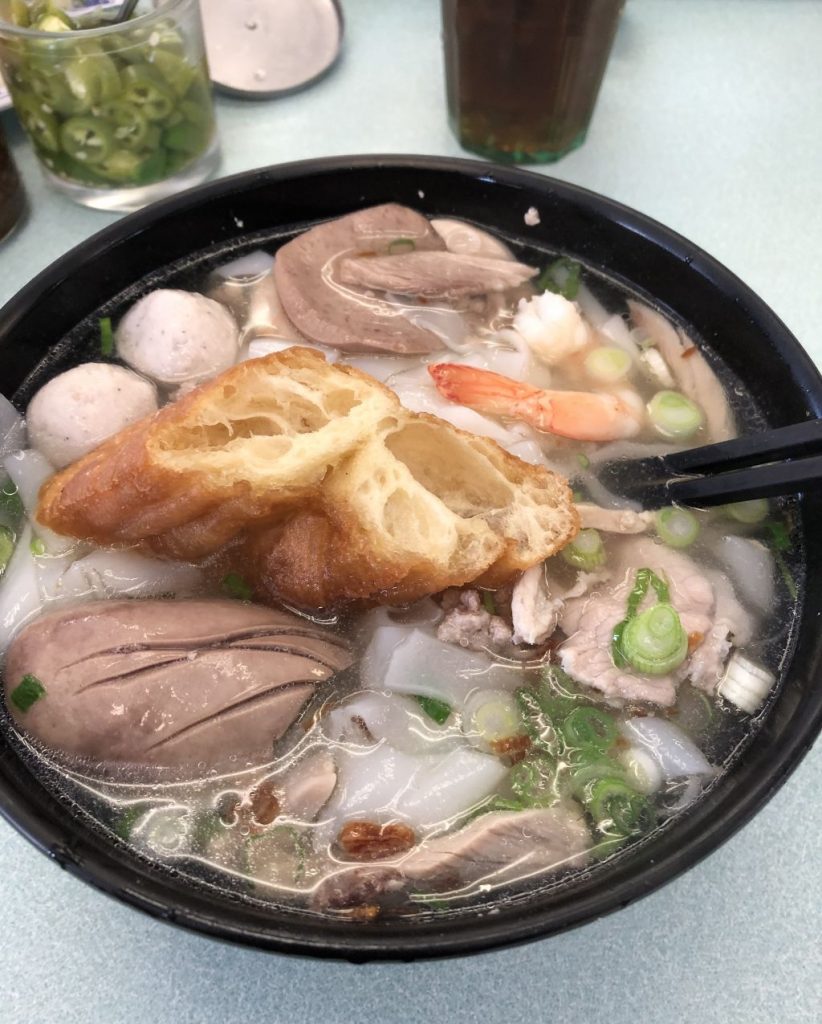
That's a huge chunk of pork kidney. I didn't eat so much kidney till I researched hu tieu! Diana Zheng, author of a Teochew cookbook (I adore her oyster omelet recipe), mentioned that old school Teochew (Chiu Chao, Trieu Chau) restaurants often have offal on the menu as separate dish. With so much offal, why not add it to the noodle soup?
The kidney is snappy. Sometimes it's funky tasting but give it a try! Set it aside if you don't like it. I'm a pork liver person myself, when it comes to hu tieu garnishes. The fried doughy chunk of Chinese cruller is gilding the lily!
Rice noodle size
I know, you've watched the hu tieu episode of the Flavorful Origins documentary series on Netflix. There's a big deal made about very slender rice noodles. Personally, I like a fatter rice noodle.
The one directly below was considered "large" but it's more like medium-large. They were at Kim Ky Noodle House and tasted like tender fresh noodles. Note the fried garlic garnish plus the chiles in vinegar and chile oil (more on the chile oil below). Hu tieu is a customizable experience.

When the rice noodles are humongous, they're so hard to eat in broth. They're very had to corral and they don't seem to pick up the broth well enough. I love Trieu Chau restaurant but didn't have a great bowl when I ordered "large" rice noodles.
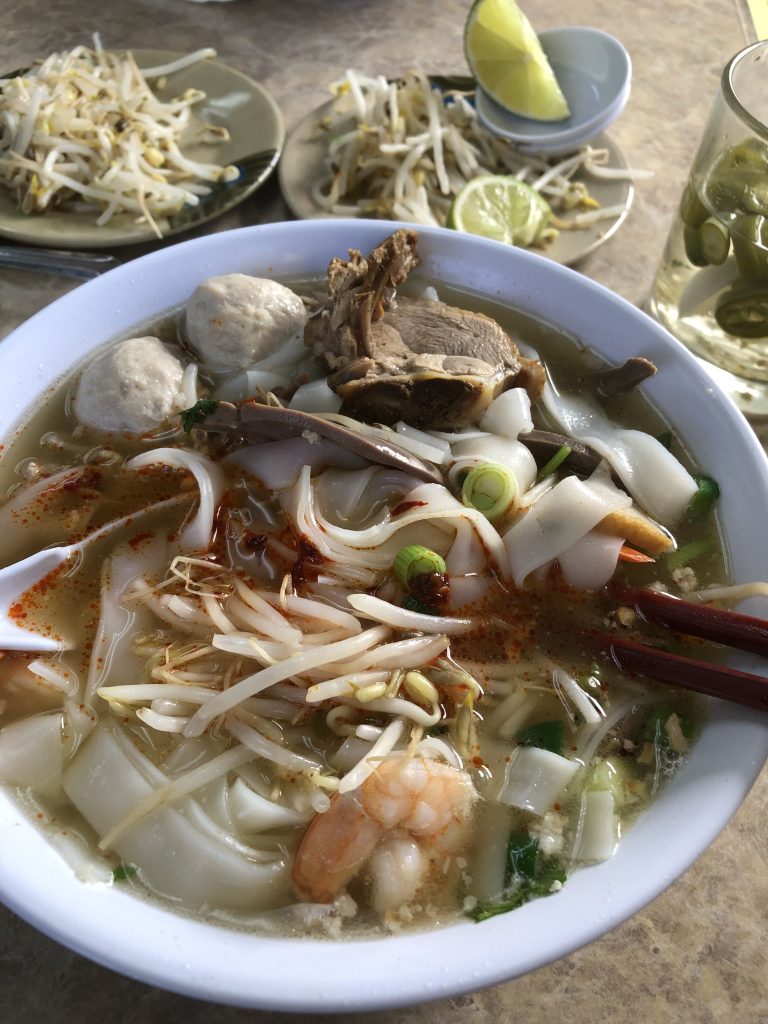
Chewy Hu Tieu Noodles
Viet people can be obsessed about hu tieu with the chewy noodles (hu tieu dai). They are clear and mostly made of tapioca. You buy them at Viet markets. They're not a Chinese market thing. They'll look like inedible sticks. Anyway, in a bowl, they're fun and chewy-tender. Check them out!
Below are the chewy noodles with a strange tomato and pork sauce, as served at Thanh Xuan in Little Saigon. A similar version is served at Phuong's Restaurant.
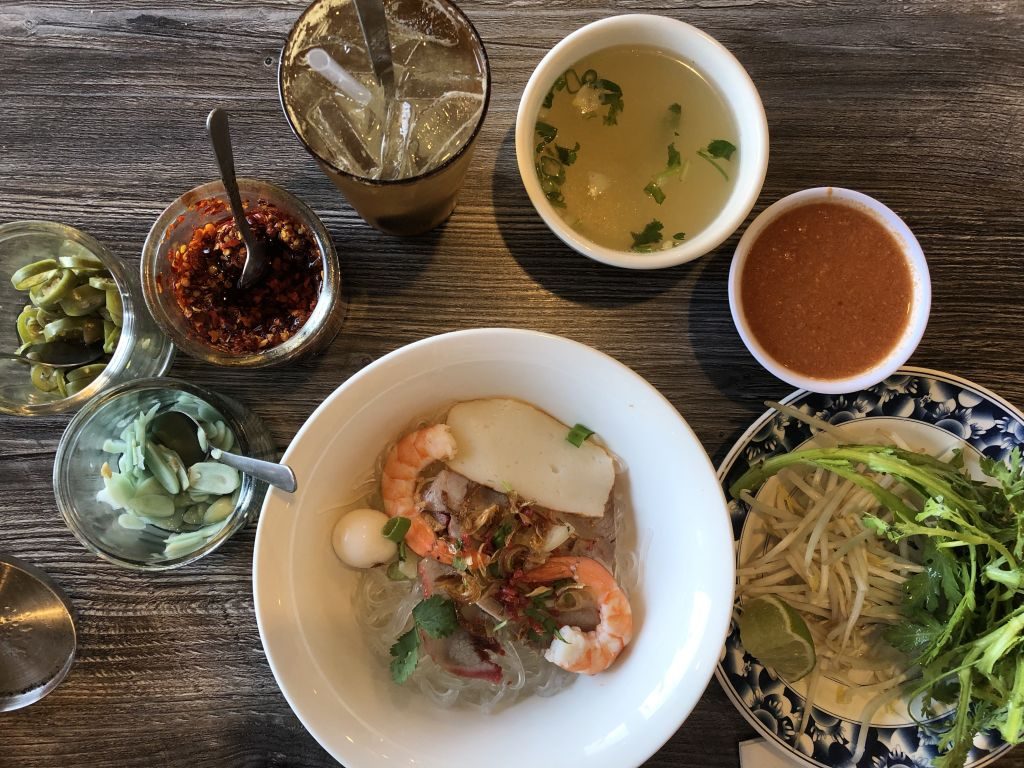
You can usually combine rice and wheat noodles, if you like. Some restaurants let you combine the chewy noodles with other noodles, but it's a rare thing to come across.
Fresh garnishes
A waiter taught me to order blanched bean sprouts. "They're easier to digest," he said. I like the flavor too. But at a spot like Co Ba, where there are more Viet-style hu tieu, you get chrysanthemum greens too. Chinese celery is what I grew up on but it's pricey. The greens add a pungent, spicy note. Each hu tieu restaurant has its distinctive take on things so eat around to pick your favorite!
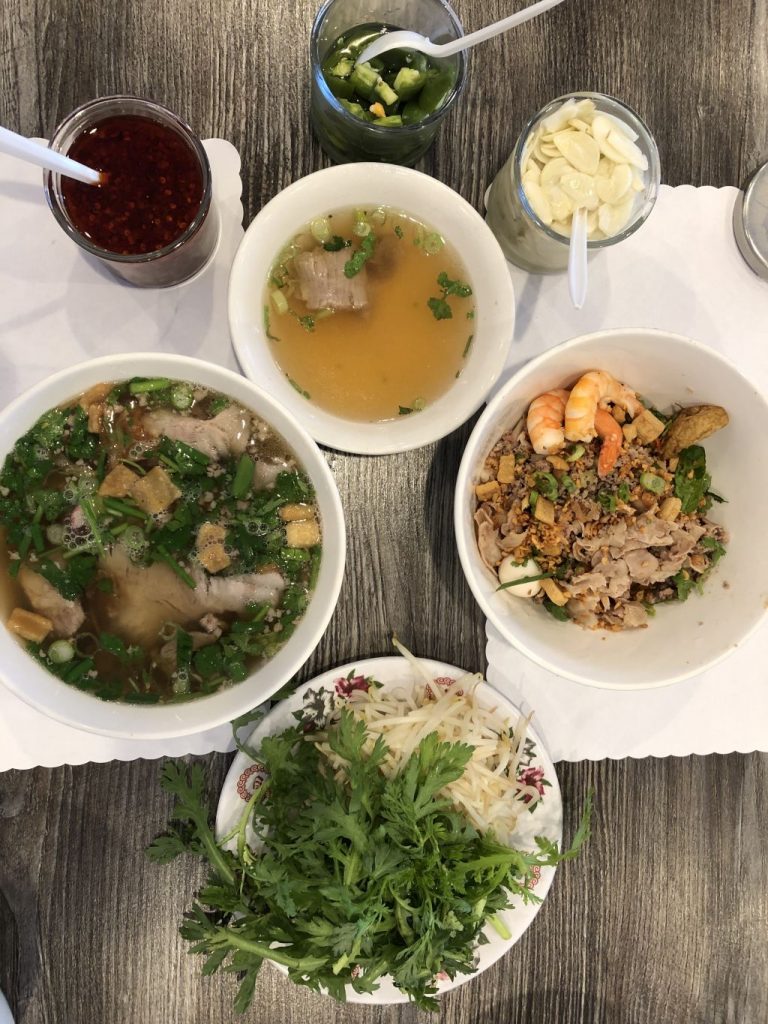
The bowl of broth at Co Ba has a little bit of pork spare rib, which is easier to eat than the gargantuan pork bones served at other places. Attack large bones with your fingers and a fork. Use scissors to cut the Chinese cruller and add it to the bowl like a crouton.

Magic Sa-te Chile Oil
I add too much of this chile oil to my hu tieu. It's similar to the lemongrass, dried shrimp sa-te chile sauce recipe in The Pho Cookbook. There's a seafood note and it's not too hot. It adds umami to a bowl of hu tieu that's akin to a mild X.O. sauce! Look for it! This one below is from Trieu Chau restaurant. The chile oil at Co Ba is good too.
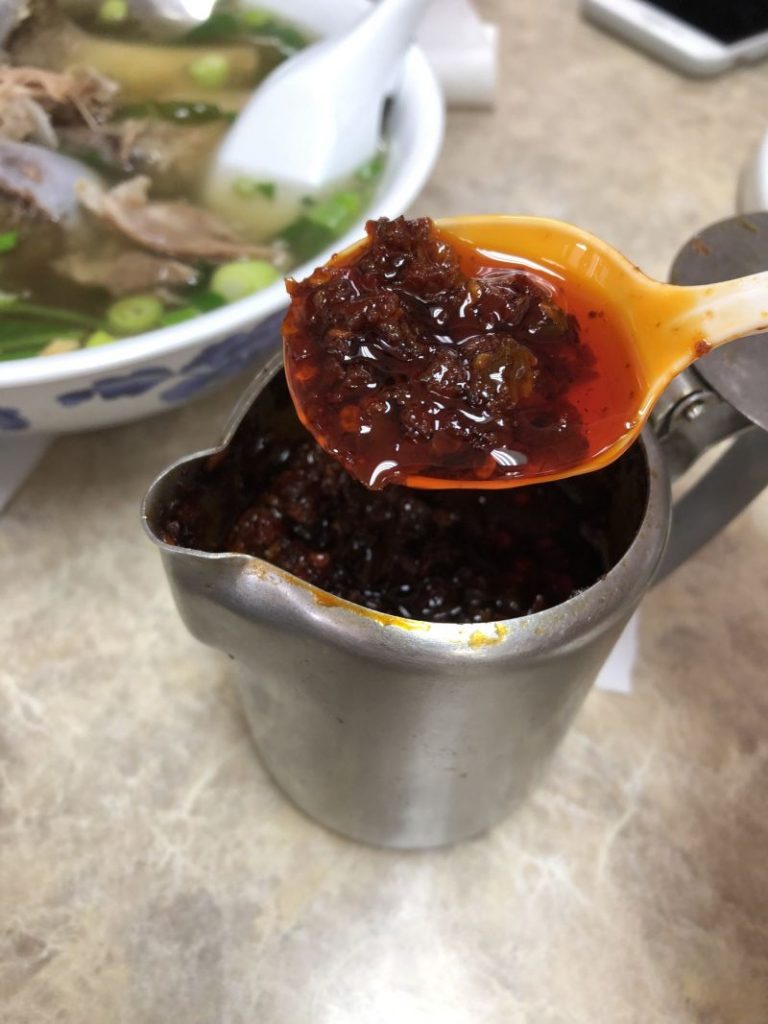
How to Make Hu Tieu
So, you can't eat hu tieu out all the time. Or, maybe it's far from you. Or, maybe you want to make create a version of your own. If that's the case, here's a recipe for hu tieu Nam Vang that I've long used. Enjoy!
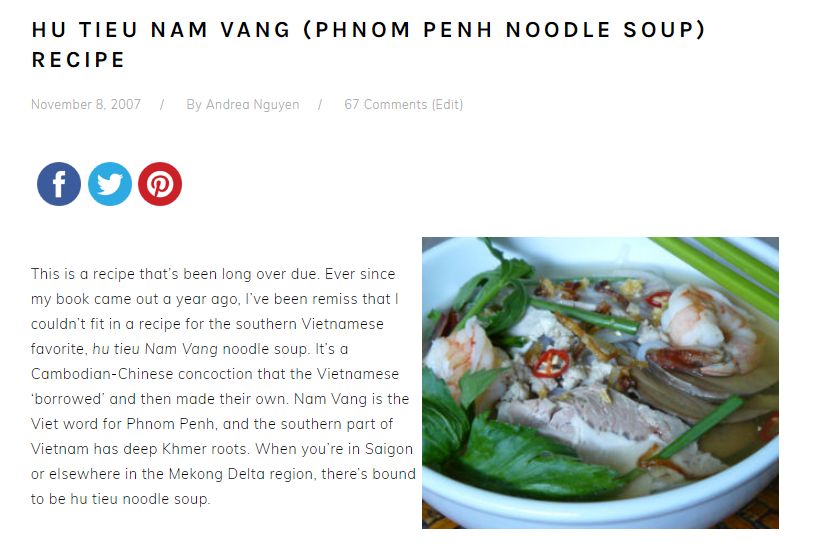
If you're a hu tieu noodle soup lover, where do you go for it? What do you order? Or do you make it at home? Do share!













